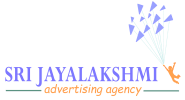Lead generation is the process of finding people (leads) who’re likely to become your customers immediately or in the future. “Finding” people implies finding information about people, like their name, email ID or organization’s name, all of which you can use to initiate a business relationship with them. You can generate leads organically and/or by spending money, depending on your resources. If you meet fifty people at a conference, request them for their email ID, and they share it with you, that’s an example of lead generation. If a visitor to your website fills out your signup form, that’s lead generation too. Or let’s say you’ve posted about your product/service on social media. A visitor leaves a comment, expressing interest in your business. This is also lead generation. These examples might make it seem like lead generation is pretty easy; it is not. To get people to divulge information about them, you should be able to articulate the value in your business solution. Plus you need to be present in channels that get you closest to your target audience.
Channels of lead generation:
Broadly speaking, there are two channels of lead generation: inbound and outbound. Both channels are obviously aimed at generating leads for your business. But there’s a slender difference in the way they work. The outbound method involves a proactive attempt to reach out to your audience. This usually begins with purchasing lead lists. You then contact these leads by calling them directly (cold calling) or sending them physical mails (direct mail). For a wider reach, businesses look beyond lead lists and use billboards, print ads, television ads, and radio ads. The emphasis here is on budget, media connections, and how much marketing muscle you can flex. In outbound lead generation, your pitch is quite apparent and there are no efforts made to educate your audience. The inbound method attracts leads using online content. You create a website, or you write a blog, and you optimize it for online search through SEO (search engine optimization) techniques. This means the content has the appropriate keywords and answers the questions your target audience is asking. When your content is easily discoverable and begins to engage your readers, they become your leads. Depending on how you interact with them from then on, they can become your customers too. In inbound lead generation, you educate your target audience through a carefully planned content strategy. This takes time and involves very little budget spend. Two keywords here: content and SEO (search engine optimization). And the domain is largely digital.
Outbound vs. Inbound:
Outbound lead generation:
- Interrupts leads
- Communication is one-way
- Primary motive is to sell; the marketing intent is explicit
- Budget is king
- The business decides when and how to engage with the audience
- Channels of engagement include cold calls, direct mails, print media, billboards and conferences
- Generic and targeted at the masses
Inbound lead generation:
- Attracts leads
- Communication is two-way
- Primary motive is to educate; the marketing intent is subtle
- Content is king
- The audience decides when and how to engage with the business
- Efforts are concentrated around the digital domain; content extends across text, images, video and audio
- Personalized for specific audience segments/demographics
6 ways to generate sales leads online:
· Content marketing
Create and distribute content with a primary focus on education, not selling. Content can be produced in various formats—blogs, infographics, videos, case studies, white papers.
· Social media
Depending on your business, every social media platform can be a precious lead generation channel. Facebook, Twitter, Instagram and Snapchat are essential for B2C; LinkedIn is elementary for B2B.
With email, you get to initiate a one-to-one conversation with your recipient, while sharing a blog, inviting them for a webinar, informing them about a product update, or offering a discount.
· Webinars
Webinars require people to share their email ID, which makes it an ideal lead gen activity. Timely webinars, with relevant topics and quality speakers, can build a brand around your business.
· PPC (pay-per-click) ads
Clicking on a PPC ad takes the visitor to a landing page, which collects the lead’s information. PPC ads work because they contain keywords relevant to your audience, plus they appear on page one of Google.
· Display ads
Also called banner ads, display ads are like print ads for digital. Crisp copy, a persuasive CTA (call-to-action), illustrations and animation are effective elements in display ads.
